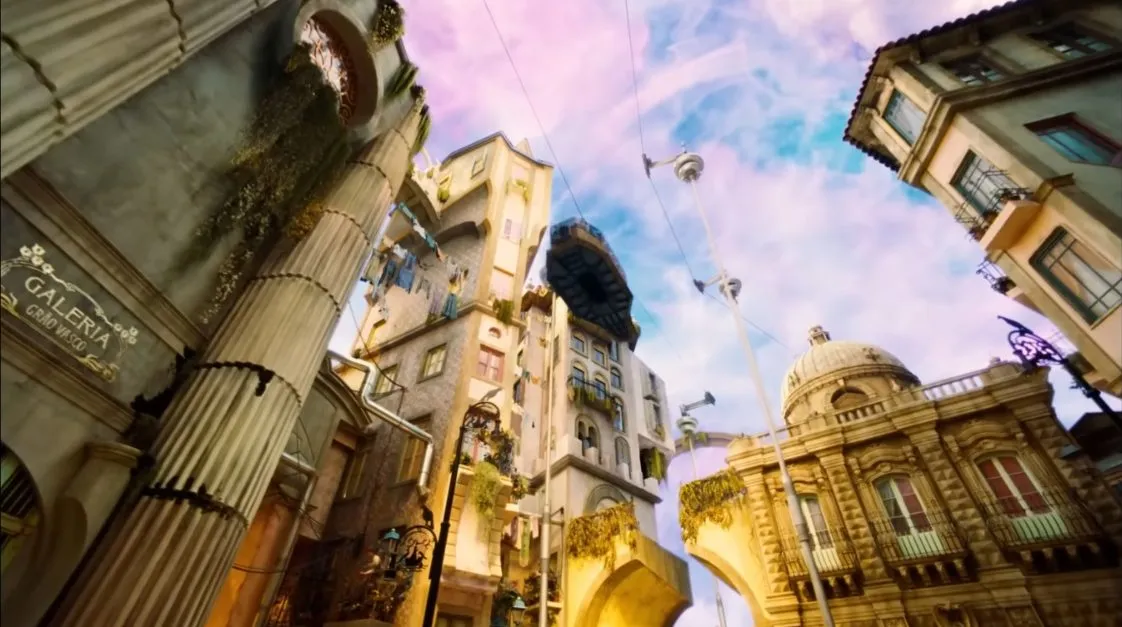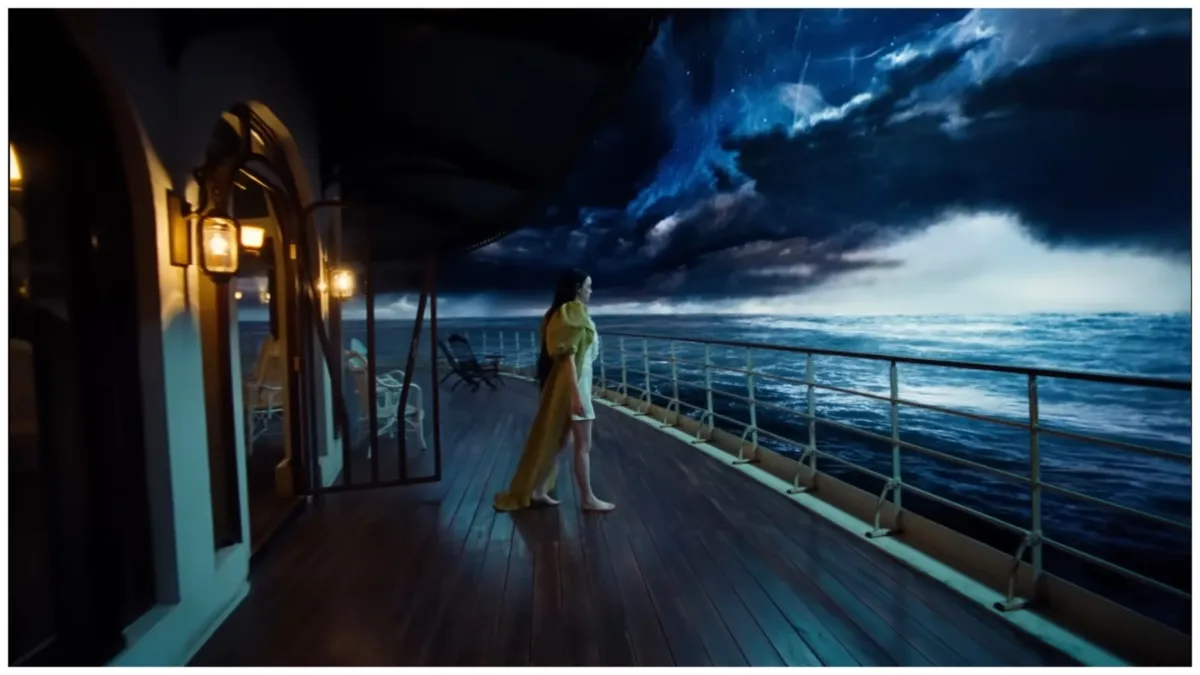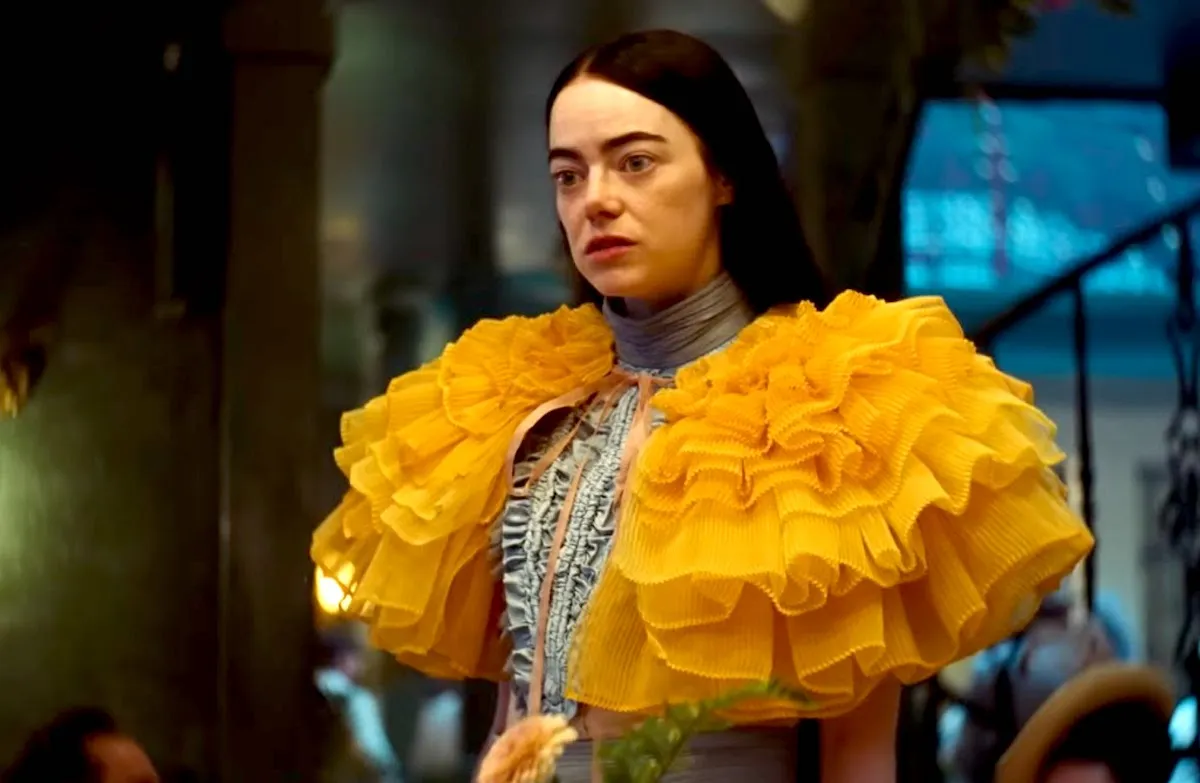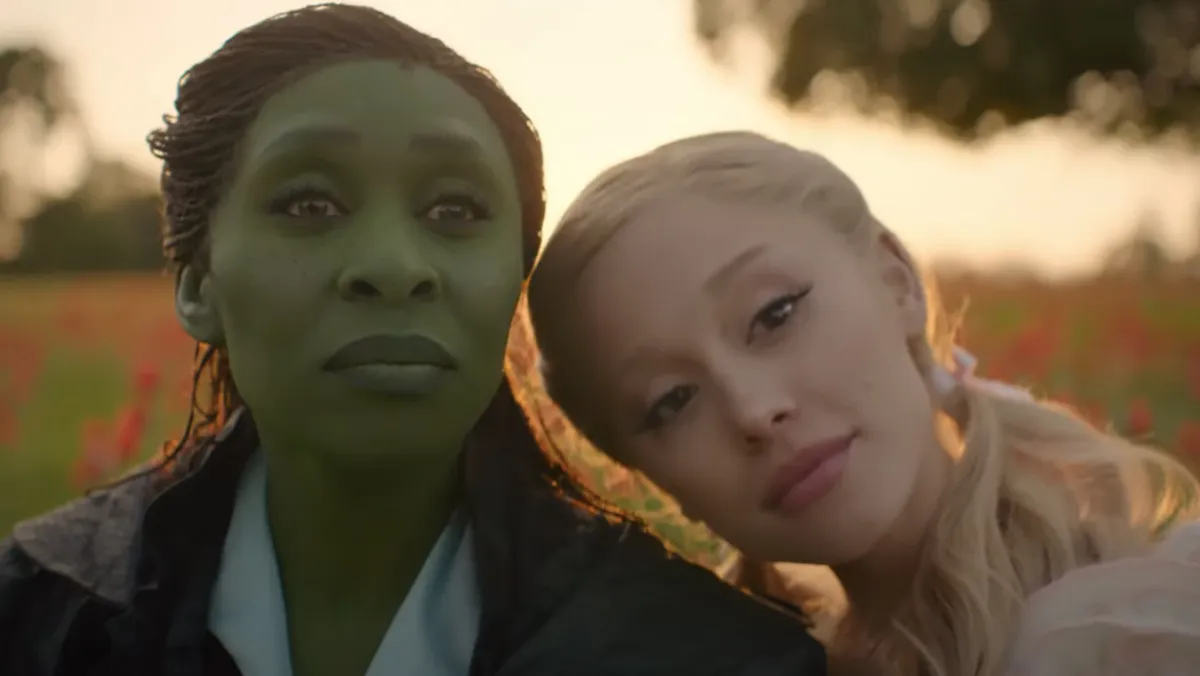The world-building in cinema has been astounding this year, from the pretty pink world of Barbie Land to the oil-rich fields of 1920s’ Osage Nation, but Poor Things has taken us to a land more fantastical and surreal than them all, making it a fitting nomination for the Oscar for Best Achievement in Production Design.
Emma Stone plays Bella Baxter in Poor Things, a woman who, unhappy with her marriage, throws herself off Tower Bridge, only to be brought back to life, Frankenstein-style, by bizarre surgeon Godwin Baxter, played by Willem Dafoe. The doctor puts the brain of Bella’s unborn child into her body, creating a physically fully grown woman with the mental faculties of a toddler. This is where director Yorgos Lanthimos’ vision for the aesthetic stems from: a world viewed through the eyes of Bella Baxter.
In a behind-the-scenes video that looks at the production design of the film, the director states, “I always thought that we should build a world according to Bella and to her understanding and perception of it.”
For this, then, he turned to production designers James Price and Shona Heath. The former has worked as a production designer since 2002, starting on British TV shows before working on his first feature film design in 2018. Heath has a strong background in fashion and is most known for her magical prop creations for surreal fashion photographer Tim Walker. As a fan of Walker and his fabulous set designs, I can see that at play here with Heath’s design work and how she uses practical props and design elements that feel dark, romantic, and dreamlike.
The pairing of the two came from Lanthimos’ desire to have “two people with very different minds come together.” Stone also discussed the artists’ collaboration in the video, describing how she saw the vision for the film unfold:
They worked very closely in tandem and I remember seeing the early lookbooks of what they were working on because they seemed to have two very different sensibilities that seem to have been up so beautifully.
“We all share as collaborators an admiration for Yorgos’ work, and an absolute love for the scripts,” says Heath.
“It felt sort of timeless,” Price adds, “Your mind just starts racing with where it could go. London. Lisbon. Paris.” The film was not shot on location, though. Wanting to hearken back to the Hollywood of old, all the sets were built and the backdrops painted.
Talking to British Vogue, Price stated,
All of our sets were done that way, because you’re trying to create a unique world that everyone’s got to buy into. It all starts with us. Everybody else follows the world that we create, so it’s a great responsibility, setting the tone and making it believable for these characters to inhabit that world.

The sets were created and filmed in Budapest, where four large-scale sets were built on several soundstages. London apparently took 16 weeks to build and Lisbon 20, with craftsmen and artisans working from the ground up to bring this magical vision to life. The result was a combination of modern technology and practical effects such as set building, painted backdrops, and miniatures. These sets were transformed into a childlike ideal of these cities, which is honestly far more wonderful than the real thing in many cases. (Not knocking any of the cities, but a little childlike wonder doesn’t hurt, now, does it?)
The wonderful thing about not needing to be accurate to a specific real-life location or period is that you can manipulate the set and design to help steer the story, the set then becoming almost like another character that helps move the story along. As Bella adapts and starts to grow her awareness, going from a toddler to a woman, so too does the design of the film change to match that. Talking to Vogue, Heath says, “In the set, there’s a lot of reference to where she’s going, or where she has been, or where she wants to be.”

In the above video, Dafoe also talks about how the design aids the film: “It really defines the story we’re telling. It’s got a refined aesthetic but it also has a sense of humor.”
The designs work on both a large scale, with entire city streets creating an atmosphere and sense of surreal grandness, and a small scale, with tiny design details such as phallic-shaped windows in a Parisian brothel and clitoris-shaped light switches, perhaps a hint to customers as to what they need to press if they want to turn something on. (There’s that humor Dafoe was talking about.) The aesthetic of the film is beautiful, fantastical, and humor-filled, exquisite from its concept to its execution.
It is almost guaranteed that Poor Things will receive a nomination for its incredible production design. Though there have been some fantastic and large-scale designs this year, it feels like none of them come close to the originality, creativity, and sheer artistic beauty of this film.
I truly hope they haven’t done away with the sets, as I would pay good money to go visit Budapest and walk around these locations and imagine myself whisked away to the alternate, surreal, and whimsical world that Lanthimos, Price, and Heath have created.
(featured image: Searchlight Pictures)










Published: Dec 14, 2023 12:29 pm